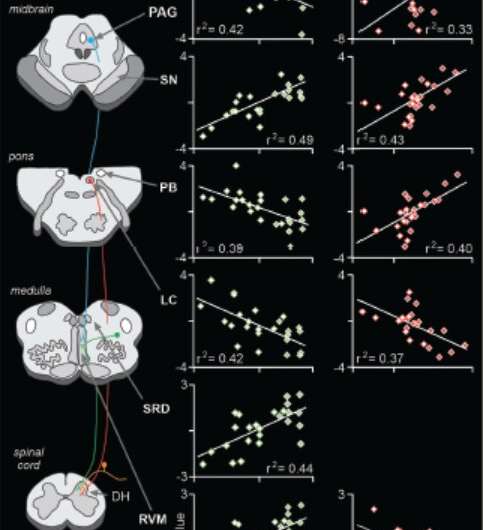Brainstem pathway modulates pain in placebo effect

It’s not all in your head, but your expectations can sway your perception of pain intensity. Information about expectations—the driver of the placebo effect—travels from the cortex to groups of cells in the brainstem, which then modulate pain signals in the spinal cord, according to new research published in JNeurosci.
Crawford et al. measured brainstem activity with high resolution fMRI in participants as they rated the pain of a hot stimulus applied to their arm. The team conditioned participants to think three types of cream had been applied to their arm: a pain-relieving cream with lidocaine, a heat-intensifying cream with capsaicin, and Vaseline. In reality, all three creams were Vaseline, and any perceived differences in pain came from the placebo or nocebo effect (imagined increases in pain).
Placebo and nocebo effects influenced activity in the same brainstem circuit but in opposite ways. The strength of the placebo effect was linked to increased activity in an area called the rostral ventromedial medulla and decreased activity in a nucleus called the periaqueductal gray; the nocebo effect induced the opposite change.
Source: Read Full Article



